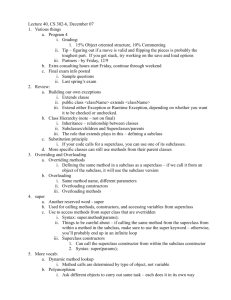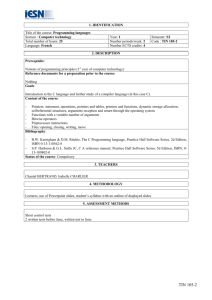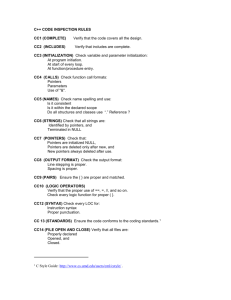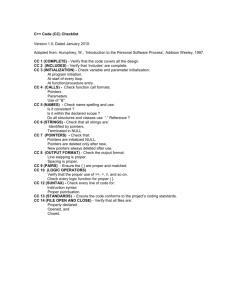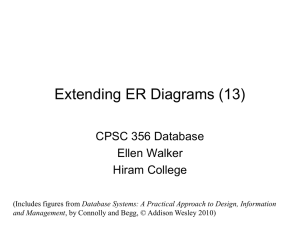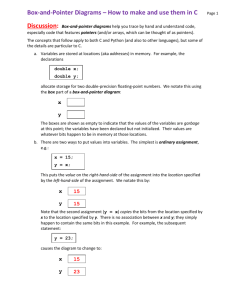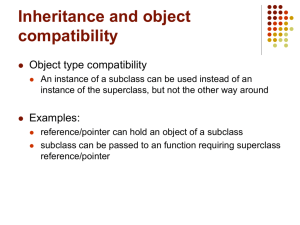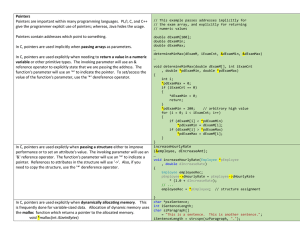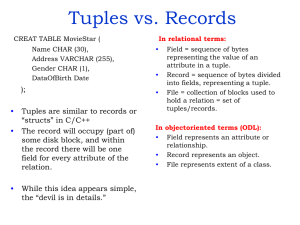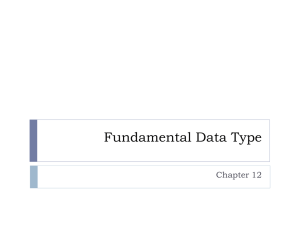Implementing Dynamic Dispatch
advertisement
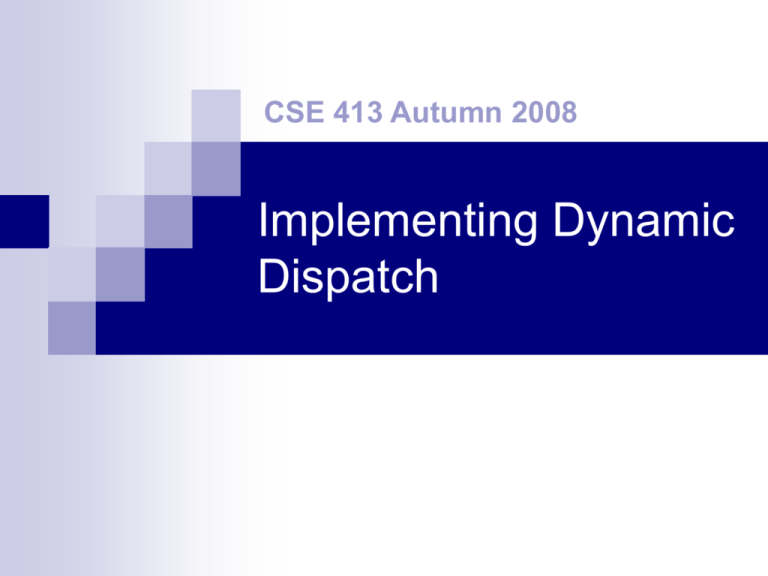
CSE 413 Autumn 2008 Implementing Dynamic Dispatch Dynamic Dispatch Recall: In an object-oriented language, a subclass can override (redefine) a method When a message is sent to an object, the actual method called depends on the type of the object, not the type of the variable that references it How? Conceptual Model An object consists of State (instance variables, …) Behavior (methods, messages) So we can implement an object as something that contains data and procedures But… Not good engineering – multiple copies of method code in each object Attempt #2 Instead of replicating the methods in each object, include a set of pointers to the applicable methods But… Lots of duplicate pointers per object Attempt #3 Instead of having method pointers in each object, have one set of method pointers per class Each object contains a pointer to a “class object” Method calls are indirect to the actual methods in the class object A little bit of time overhead per method call Need some tweaks for something as dynamic as Ruby Dynamic Dispatch in Ruby Complicatons Modules (mixins) as well as classes Can add or change methods dynamically as the program runs Can include per-object methods as well as per-class methods Ruby Data Structures Every object has a pointer to its class A class is represented by a “class object” Every class object contains a hash table with method names and code Every class object has a pointer to its superclass Search for applicable methods starting in the object and moving up If you hit the top without finding it, “message not understood” Complications Mixins One object per mixin, searched after the class object and before the superclass Per-object methods Define a “virtual class” of methods for that object that is searched first What is the class of a class object? Interesting question… left as an exercise Types for O-O Languages Java, C++, and others are strongly typed Purpose of the type system: prevent certain kinds of runtime errors by compiletime checks (i.e., static analysis) O-O Type Systems “Usual” guarantees Program execution won’t Send a message that the receiver doesn’t understand Send a message with the wrong number of arguments “Usual” loophole Type system doesn’t try to guarantee that a reference is not null Typing and Dynamic Dispatch The type system allows us to know in advance what methods exist in each class, and the potential type(s) of each object Declared (static) type Supertypes Possible dynamic type(s) because of downcasts Use this to engineer fast dynamic type lookup Object Layout Whenever we execute “new Thing(…)” We know the class of Thing We know what fields it contains (everything declared in Thing plus everything inherited) We can guarantee that the initial part of subclass objects matches the layout of ones in the superclass So when we up- or down-cast, offsets of inherited fields don’t change Per-Class Data Structures As in Ruby, an object contains a pointer to a per-class data structure (But this need not be a first-class object in the language) Per-class data structure contains a table of pointers to appropriate methods Often called “virtual function table” or vtable Method calls are indirect through the object’s class’s vtable Vtables and Inheritance Key to making overriding work Initial part of vtable for a subclass has the same layout as its superclass So we can call a method indirectly through the vtable using a known offset fixed at compile-time regardless of the actual dynamic type of the object Key point: offset of a method pointer is the same, but it can refer to a different method in the subclass, not the inherited one
